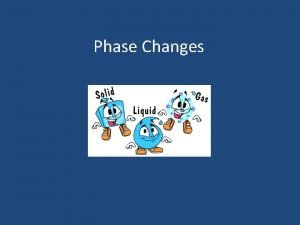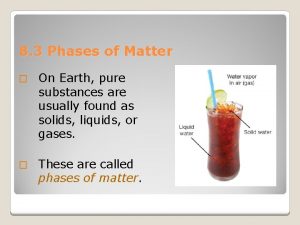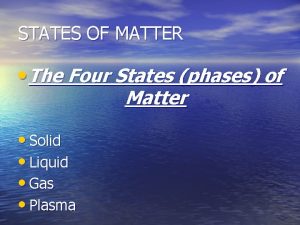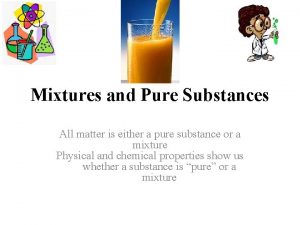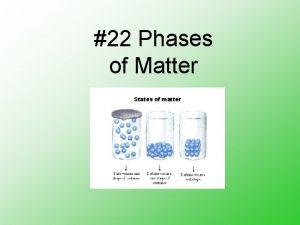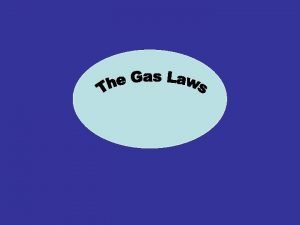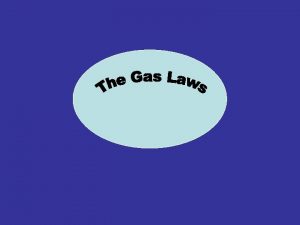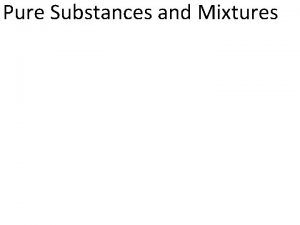10 3 Phases of Matter On Earth pure












- Slides: 12

10. 3 Phases of Matter Ø On Earth, pure substances are usually found as solids, liquids, or gases. Ø These are called phases of matter.

10. 3 The phases of matter ØA solid holds its shape and does not flow. ØThe molecules in a solid vibrate in place, but on average, don’t move far from their places.

10. 3 The phases of matter ØA liquid holds its volume, but does not hold its shape— it flows. ØLiquids flow because the molecules can move around.

10. 3 The phases of matter ØA gas flows like a liquid, but can also expand or contract to fill a container. ØA gas does not hold its volume. ØThe molecules in a gas have enough energy to completely break away from each other.

10. 3 The phases of matter ØWhen they are close together, molecules are attracted through intermolecular forces.

10. 3 The phases of matter ØThe forces in chemical bonds are stronger than intermolecular forces.

10. 3 Intermolecular forces ØWithin all matter, there is a constant competition between temperature and intermolecular forces. ØWhen temperature wins the competition, molecules fly apart and you have a gas. ØWhen intermolecular forces win the competition, molecules clump tightly together and you have a solid.

10. 3 Melting and boiling ØThe melting point is the temperature at which a substance changes from a solid to a liquid.

10. 3 Melting and boiling ØThe temperature at which a liquid becomes a gas is called the boiling point.

Notice temperature is constant while ice melts!

10. 3 Melting and boiling points of common substances ØMaterials have a wide range of melting and boiling points.

10. 3 Sublimation ØSometimes a solid can change directly to a gas when heat energy is added. ØThis process is called sublimation.
 4 phases of matter
4 phases of matter Phases of matter foldable
Phases of matter foldable Phases changes of matter
Phases changes of matter Phases of matter
Phases of matter 3 phases of matter
3 phases of matter Concept map of matter solid liquid and gas
Concept map of matter solid liquid and gas Four states of matter
Four states of matter Why isn't it a good idea to classify matter by its phases
Why isn't it a good idea to classify matter by its phases A mechanical mixture
A mechanical mixture Pure planet fulvic zeolite
Pure planet fulvic zeolite Classification of matter section 1 composition of matter
Classification of matter section 1 composition of matter Frontal and parietal lobes
Frontal and parietal lobes Chapter 2 matter section 1 classifying matter answer key
Chapter 2 matter section 1 classifying matter answer key


